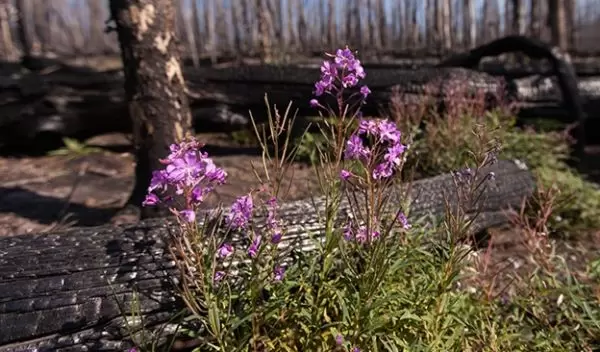
In fire-prone West, plants need their pollinators, and vice versa
The year 2020 is the worst fire year on record in the United States, with nearly 13 million acres burned, 14,000 structures destroyed and an estimated $3 billion spent on fire suppression.
Scientists are still grappling with some of the most basic questions about how fire influences interactions between plants and animals in the natural world.
A new U.S. National Science Foundation-funded study in the northern Rockies explores the role of fire in the finely tuned dance between plants and their pollinators. Published in the Journal of Ecology, the findings by researchers at Washington University and other institutions are particularly significant in light of recent reports about the rapid and widespread decline of insects globally.
"A large number of studies have looked at how fire affects plants, or how fire affects animals, but what is understudied is the question of how fire affects both, and about how links within their ecological networks might respond to fire disturbance," said Jonathan Myers, an ecologist at Washington University and co-author of the study.
The researchers discovered that wildfire disturbance and plant-pollinator interactions are both important in determining where plants take root and where pollinators are found. But in burned landscapes, plant-pollinator interactions are as important or more important than any other factor in determining the composition of species present.
The importance of flowering plants in the composition of pollinator species doubled to quadrupled following wildfires. And the importance of pollinators in determining plant composition nearly doubled.
The research advances the understanding of how and why wildfire affects conservation, land management and restoration of forest ecosystems, according to Myers. "It also shows that ecological models that predict how species will respond under various climate change scenarios should consider biological interactions within food webs."
Added Doug Levey, a program director in NSF's Division of Environmental Biology, "This study reminds us that fire is an important part of how ecosystems function, and that no species exists in isolation."
